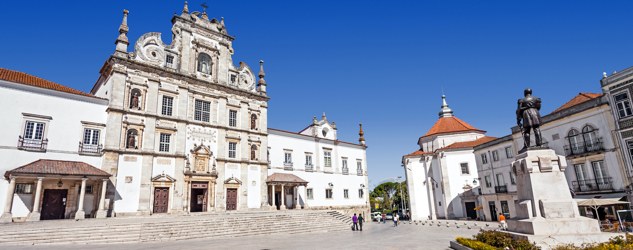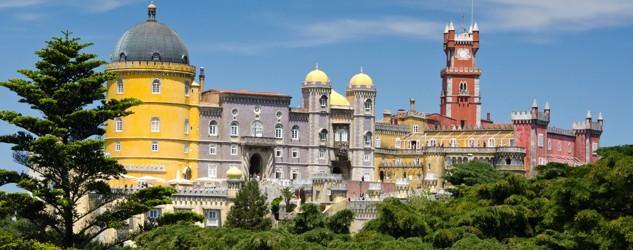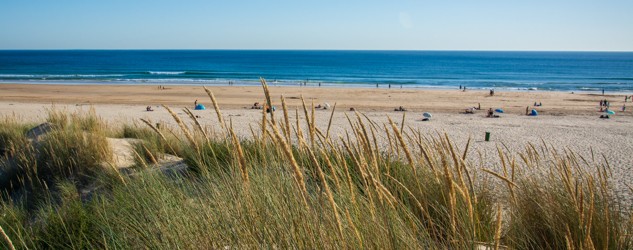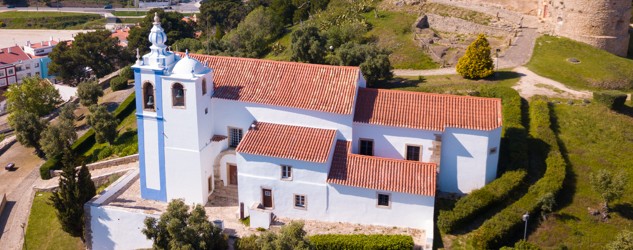There are loads of interesting day trips just an hour from Lisbon. What are you waiting for: check out our list of the 5 best things to do near Lisbon on a weekend break.
Lisbon is a fascinating place to visit, with its squares, the ever-changing views from different vantage points high above the town, the rumble of passing trams, the ever-present shadow of the famous author Pessoa, who seems to walk beside us. There are also cafes, good food, a leisurely stroll, history, and more. You’ll find the real Lisbon in her different neighbourhoods, but a visit to the city doesn’t end with the Barrio Alto, the Tower of Belém, the Alfama or the climb up to São Jorge Castle. That’s why we’ve put together a few alternative suggestions for things to do on a weekend break:
Cabo da Roca: to the ends of the Earth
Since you’re in Lisbon, why not venture a little further, to the very end of the world? At least that’s how they thought of it in ages past. Until the 16th century, seafarers were waved off from this point at the edge of the known world. The poet Luis de Camões described it as the exact spot where ‘the land ends and the sea begins.’ Ahead lay nothing but the sea and infinite possible adventures. Today, it’s the same ocean but we now know the Earth is round.
The cape sits within Sintra-Cascais Natural Park, an area of countryside just half an hour’s drive from Lisbon. It’s well worth the trip to Cabo da Roca to gaze upon the scene formed by cliffs plunging to the vast churning ocean, pounding waves and the lighthouse that guides passing ships. The best time to visit is at sunset, when the place is transformed by the last of the Sun’s rays into something out of legend. Before heading back, why not pick up a certificate accrediting your presence at the end of the world, just in case they don’t believe you back home?
Ribatejo: street art meets country

The Public Art project from EDP Foundation has brought modern art to Portugal’s most remote villages. The project began in 2015 and is now in some forty locations, including Ribatejo.
Vila da Marmeleira makes a perfect day trip from Lisbon, just 75 km from the Portuguese capital but in another world. Time seems to pass more slowly in this small freguesia (parish), so it’s a surprise to find two murals that wouldn’t look out of place in the city. One, in the bus stop on Av. José Pereira Caldas, depicts a deep blue sky filled with shining stars. The other, on the side of an electricity transformation station, shows the face of an old woman, known to all as ‘la Ereira’, who used to roast chestnuts in the square.
As well as checking out the murals–also found in Assentiz, Ribeira de São João and São João da Ribeira–don’t forget to leave time to visit Santarém. Ribatejo’s most important city is also the Gothic capital of Portugal and was home to the monarchs throughout the Middle Ages.
Sintra: because the classics never disappoint

Each to their own, as the saying goes, and that’s certainly true when it comes to Sintra. It captivated Lord Byron, who described it in a letter to his mother as being perhaps the most charming place in Europe. However, it wasn’t to the taste of that other illustrious man of letters, José Saramago, although the Portuguese author was referring more to the Pena Palace when he described it as a clash of confused styles. However you look at it, the palace is, without doubt, the best example of Portuguese Romanticism and well worth the trip from Lisbon.
The home of the Portuguese royal family during the 14th century is today the most visited palace in Portugal. But Sintra has so much more to offer: it’s a city of palaces, magnificent country estates, forests you’d swear were enchanted and steep, narrow streets. Don’t forget to make the climb up to the Moorish Castle (8th or 9th century) whose walls and towers now serve as viewpoints over the countryside. Or the Quinta da Regaleira palace whose initiation well wouldn’t have looked out of place in Game of Thrones.
Gastro tourists should know that while Lisbon has pastéis de Belém (custard tarts), Sintra’s speciality is queijadas (small cakes made with cheese). The best place to try them is at Casa Piriquita on Padarias, 1.
Costa Caparica: to the beach by bike

The beach also makes for a great excursion from Lisbon. That’s right, the city does have one: Caparica. With some 30 km of sand, the title of ‘longest beach in Europe’ seems entirely deserved. A continuous string of different beaches, whose names change according to their location, draws Lisbonites as soon as the good weather arrives. Getting there and back at the weekends when the 25 de Abril bridge is packed with cars can be tricky, to say the least. But there’s always a more eco-friendly way of doing things:
Just stick your rental bike on one of the ferries from Belém, get off at Trafaria and cycle around a kilometre to Cova do Vapor where the immense beach begins, a mecca for surfers from all over Europe. Couldn’t be easier, right? And with zero pollution.
The first and most popular beach is Sao Joao de Caparica, with its views back towards Lisbon in the distance. There’s also Medos, Sereia, Bellavista, Acacias, Terras da Costa and more. As a rule, the further south, the wilder and more deserted the beach.
Torres Vedras: an afternoon’s tasting

Wine tasting? That’s right, another great thing to do near Lisbon. While less well-known than the Douro or Porto, Torres Vedras wine is some of the oldest in Portugal. The city is home to a long wine-making tradition, which was recognized in 2018 when it was designated European Wine City along with neighbouring Alenquer.
Torres Vedras is one of the most important wine-producing areas in the Lisbon D.O.C, with numerous estates open to visitors. Among them, Adega Mãe whose new facilities–an ultra-modern dazzling white rectangle by architect Pedro Mateus–overlook a bucolic landscape of vineyards. Various tours are available, featuring tastings of their best wines, as well as a spectacular brunch made with local produce from the region.
Another great choice is Quinta da Boa Esperança. The vineyard opened in 2014 and focuses on producing sustainable, high-quality wines while respecting the environment.
So, now you’ve got your list of what to do near the Portuguese capital, time to find a flight to Lisbon and start packing your bags. Até logo!







